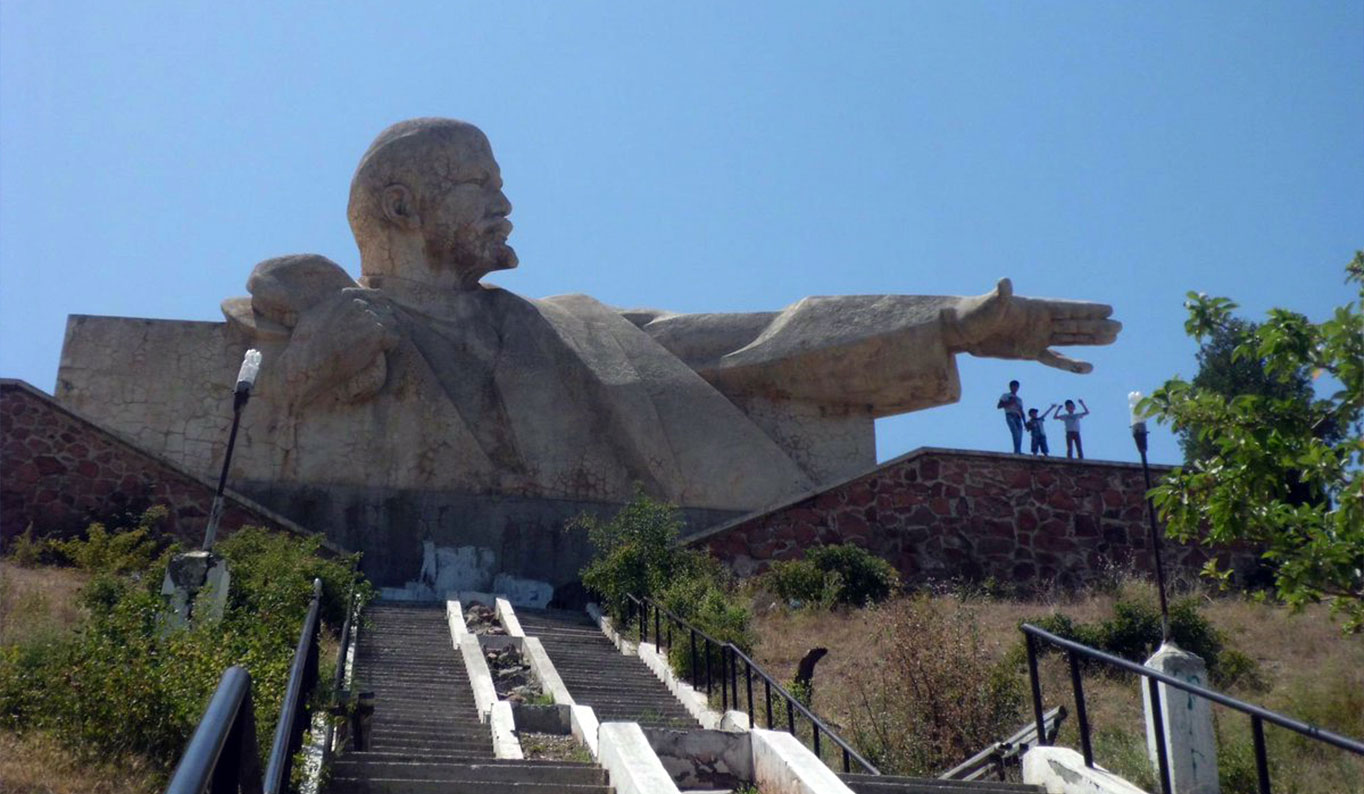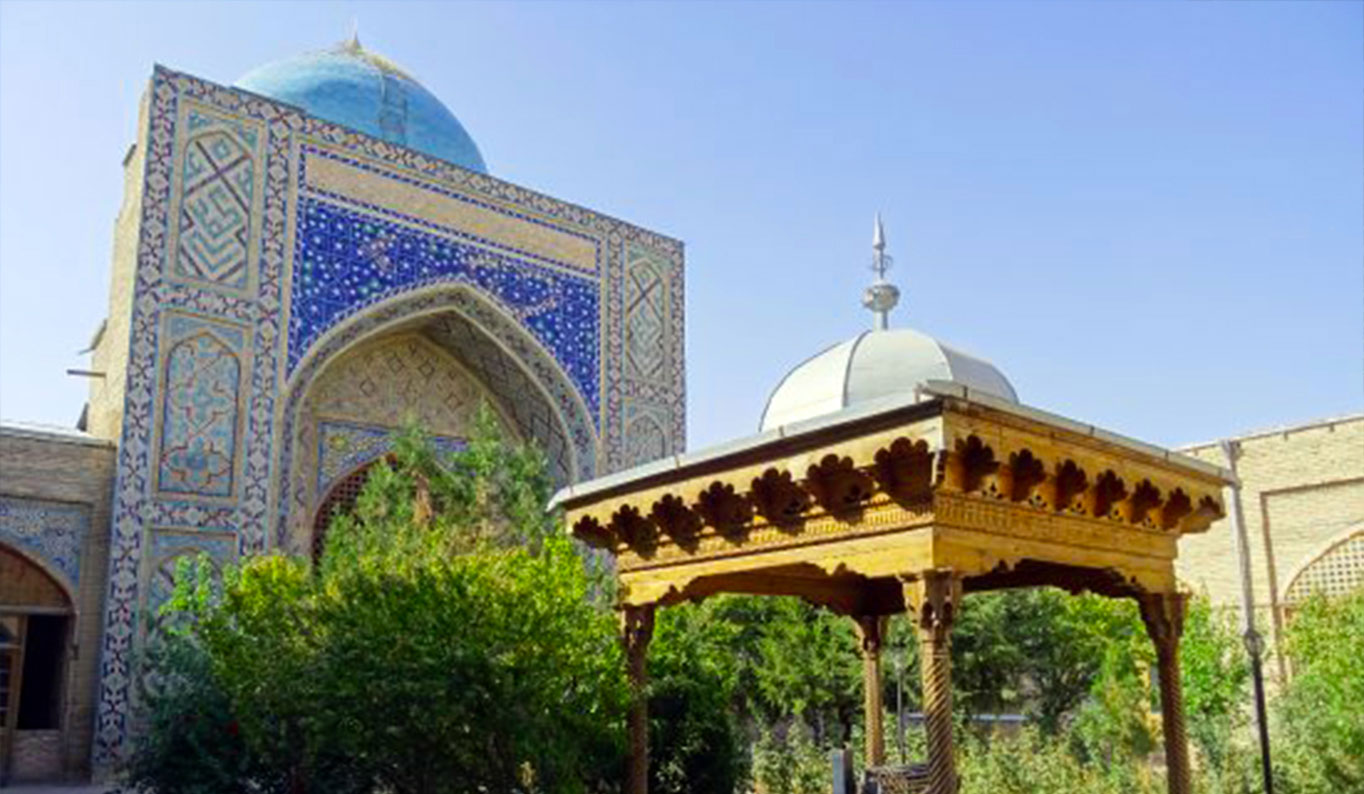Istaravshan - eastern city at the crossroads
Following the brutal beauty
We came all the way.
Rudaki
Under the hot Tajik sun 78 km from Khujand, where the green foothills of the Turkestan ridges separating the fertile Fergana Valley from the cotton fields of the former Hungry Steppes, and crossed paths - to the north in Tashkent, in the north-east - in Khujand, in the south, through the passes - in the valley of Zarafshan, in Dushanbe and Panjakent, Istaravshan is located (former Uroteppa) - a city-museum, a longtime center of trade, crafts and trades, one of the oldest cities in Central and Middle Asia, older than 2,500 years.
Istravshan gained the World fame after investigating in its territory the unique frescoes of VII-VIII centuries, which merged solemn monumentality of Iranian art with soft lines of ancient Indian and Chinese interweaving of realism. The finds are kept in the Hermitage, giving everyone the opportunity to look through the prism of centuries in the splendor that the Persians called Kurukada, Sogdians - Kurushkada and contemporaries identified it with the ancient Kiropol or, according to Ptolemy, with Kireskhata.
Istaravshan, as for most of its history was the center of the struggle - first against Greco-Macedonians, who managed to capture it only with trick - the city was already a large-scale and well-fortified, and associate it with the fate of Ustrushana - state, whose capital was located just a few kilometers away; then came the years of Arab rule, turned Istaravshan into the center of trade in the territory of Central Asia and gave it the status of the Arab Caliphate province. After the city became part of the Samanid State. In this period a large number of mosques, madrasas, mausoleums and minarets were built. Samanid State was abolished by Qarakhanids and Ghaznavids who were swept by the destructive intrusion of Mongolians. Later, the city owned by princes of Timurids, and in 1886 it became part of the Russian Empire under the name of Ura-Tube. By the way, the name of Ura-Tube is mentioned in "Babur-name» of Zakhiriddin Babur (Central Asian and Timurid ruler of India and Afghanistan, military leader, founder of the dynasty, Babur and the Mughal Empire), who sought refuge from the Uzbeks of Sheibanids dynasty. According to Professor A. Mukhtarov, the most likely the origin of the name of Ura-Tube (Uro-Teppa) is that in which precisely reflects the features of the local topography - from the words "Uro" - a pit, "Tepa" - hill. Locals sometimes jokingly describe it as a "city on seven hills." In 2000 Uroteppa returned the historic name of Istaravshan.
Like all cities with a long history and difficult destiny, Istaravshan has many interesting legends. One of them refers to the XVIII century.
In the XVIII century Istaravshan was an independent principality – region, ruled by the aged sage Fazil Bey. And all around there were powerful neighbors from whom the wealthy Uratyuba people had no rest. In the summer of 1754 the neighbors, by agreement, imposed Uroteppa from all sides. From the west came the troops of Bukhara emir Muhammad-Rahim; from the east - Kokand troops Irdana Bey, from the north of the Kyrgyz militia leader from the tribe Kushchi Kubat Bey. How did the small soldiers of Uroteppa resist such a great force? However, the rescue came from Bek of Hissar Madamin, the son in law of Fazil Bey of Uratyubian, so what's the point? The Madamin dzhigits (men) were one-two and miscalculated. And bukharians and kokandians and Kubat Bay just laughed: "How many are the opponent fighters of ours? For the fun of tui (festivals) we are a lot. For severe war we are not enough. But we did not prepare a tui for them...
All were convinced that after two weeks Uroteppa will fall. The strength - it is force. But the wily old Fazil Bey thought otherwise.
... One night a man with wrapped face was led to the tent of Madamin Bey. When he uncovered his face, Beck recognized one of the jigits of Uratube ruler. Madamin was hot tempere and gusty man. He jumped up in excitement: "How's my noble father in law? Is he healthy and good enough? What did you come with? ". The messenger bowed and put his finger to his lips: "T-c-c! Let us be alone in the tent." When the attendant came out, the messenger said: "The spirit of my lord is strong. And I came with the press and with the request. "What print is it?” "Then print of Kubat Bey. Fake." Beck wondered: "What is it for me?". "In order to accomplish the request."
Bek became angry: “You are kidding!” “Something is in the letter”. And the messenger came up close on tip toe and looked around and whispered something on bek`s ear.
Bek listened and listened and started to laugh. “Understand! Oh my uncle! He is smarter than the seven willies and even than Suleyman!”.
At dawn, the Bukhara vigilant guard grabbed two riders, sneaking past the location of troops. They found a letter, in Kufic script, with a large round stamp. The foreman reported the centurion, he - the thousand. Competent thousands, reading the contents, clutched his chest and rushed to the tent of the Emir.
"Treason! - exclaimed the Emir, stamping on the luxurious carpets with bare heels. - And it's allies? Yes slay them both Allah! Kubat Bay is a traitor, Irdana is a traitor! They conspired with the enemy behind me. Proof of this is this letter with a personal seal of Kubat-kyrgsha! Tell me what to do? ".
Viziers and closers eagerly expressed their indignation. Still would! In a letter Kubat Bey openly offered Uratube ruler to unite with the Kokand and three to attack Emir of Bukhara. And even put a stamp, so-and-so! Irdana Bay, who was directly accused by the Emir as treason with the common cause, also was furious: "What! - he roared. - suspected me of betrayal, the descendant of the noble family of Shahrukh Ming? Emir will answer! Pass here the Koran! ".
In the presence of numerous witnesses, including the envoys of the Emir, Irdana Bey swore on the holy book that he is not guilty of treason. Purified with this Irdana plunged in thoughts: "But the letter with a stamp there. So Kubat bei ... Now both ally together piled on top of the leader of the Kyrgyz people. Emir even withdrew his troops away to avoid the treacherous night attack.
This finally riled Kubat Bey: "Fools! Do the Steppenwolf understand that Snow Leopard will never stoop to treachery and betrayal! Hey! My faithful horsemen! Saddle your horses! We're going back to our mountains! Let these two to fight with Uratuba people themselves and poked each other in the nose with forged letter and a fake stamp! ".
... Father-in-law and the son-in-law met and embraced, as do the relatives: "I bow to your wisdom, Father! - Hissar Bek said. Only thanks to this trick, worthy of Suleiman ibn Davud, we destroyed so many enemies. "
Fazil Bey laughed too and stroked the white beard: "Power is power, but the mind is sometimes required. We have little soldiers for war, but it is quite enough for a feast. Hey, prepare a big celebration tui! ".
Nowadays Istaravshan is a combination of medieval monuments, with their numerous alleys and dead ends, classical oriental streets, charming mosque Kok Gumbaz, built over four centuries ago, and its rough power volumes reminiscent of the architecture of Shakhrisabz cult ensemble Sary-Mazar (XVI-XIX centuries.), and numerous teahouses, where they like to drink a bowl of tea tired from the heat of the hassles and bustles. The ancient town is fulfilled by workshops, factories; glass cubes stores, cut through the asphalt highway, interspersed with shops of jewelers, cutlers, and embroidery and pottery workshops. City of miracles, legends, tales, where possible, digging a hole for a tree, find a couple of dishes and pots and use them, not knowing that the findings were made already in the X century. And here it is possible to visit the famous mausoleum Ajinakhona, listen to the story of the genie, which is languishing in the dark crypts facilities. According to legend, the body of a noble woman Bibi Begimdzhon was buried in the mausoleum who was the descendent of the Makhdumi Khorezm. Jean appeared later as a security guard, invented in order to ward off the children to play in the monument. Although this in this ancient city as Istaravshan, everything is possible - suddenly, rubbing the lamp, it will appear right for you?
Another interesting story is connected with the construction of the mosque Havzi Sangin, erected in 1904. Abode got its name in honor of the pond (with Taj -. "havz"), dug by order of Sultan Parvonachi. In the process of digging the havz with the help of camels the slaves were exported a large amount of stones. Upon completion of work the ruler gave each servant a camel and released. The mosque was built right on the shores of the reservoir. Next to it stands the building of the mausoleum with a graceful domed ceiling.
The ancient Istravshan like a precious casket store still has many mysteries and secrets. And it opens to those who, instead of a thousand words, decided to visit the eastern city at the crossroads - not only to touch the history, but also to feel part of it.




Leave a comment